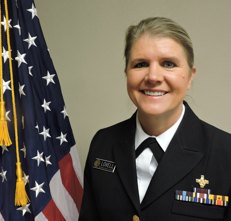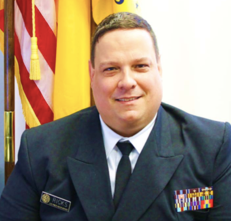Tooth decay (also known as caries or cavities) is one of the most common chronic health conditions affecting children in the United States.1 American Indian and Alaska Native children have especially high rates of tooth decay; the rate for American Indian and Alaska Native children ages 3 to 5 is 43%—more than 4 times the rate for white children.2
To address this health disparity, the Indian Health Service (IHS) Division of Oral Health created the Early Childhood Caries (ECC) Collaborative in 2009. Dr. Tim Ricks, Deputy Director of the Division, explains why. “Early childhood caries result in pain, infection, delayed speech development, lower self-esteem, and children being ostracized by their peers,” he says.
This national initiative relies on local IHS Division of Oral Health service units to increase the following for children ages 1 to 5 in their communities:
- Access to dental care
- Dental sealants in primary teeth
- Fluoride varnish applications
- Interim therapeutic restorations (a technique that prevents progression of decay without the need for anesthetic)
Implementing the Program at the Local Level
Stephanie Lovell is a registered dental hygienist with the IHS Lawton Service Unit, serving the towns of Lawton and Anadarko in Oklahoma. She heard about the ECC Collaborative at an IHS regional meeting in 2011. “We went right out to all of the Head Starts, day cares, and public schools and began doing dental screenings and applying fluoride varnishes and dental sealants,” she says.
Lovell uses techniques like glass ionomer sealants that are easier to apply and don’t require as much equipment as traditional resin sealants, making them a good fit for a mobile operation. She might spend a day at a small day care or a week at a larger public school, working alone or with an assistant. “You don’t need a ton of resources or equipment,” she says. “One or 2 people can go out and make a difference.”
All this hard work in the field is paying off: the Lawton Service Unit currently leads over 400 IHS Division of Oral Health service units in reduction of early childhood caries.
Overcoming Barriers to Care in Schools
Coordinating with schools to get parental consent was a big challenge at first, Lovell says, but they streamlined the process by including consent forms in student enrollment packets. “The biggest thing was establishing relationships with parents and teachers,” she continues. “Now when we come to the sites, they’re happy to see us.”
Fear and anxiety about dental care is another obstacle that can be overcome. “One little girl just screamed and refused to get in the dental chair. Her teacher and I worked with her every day, and by the end of the week she ran up and jumped into the chair. She’s decay-free now!”
Visiting the schools year after year can help normalize dental care and build positive feelings about dental visits. “Now kids see me in Walmart and they wave,” Lovell says. “They’re not scared of the dentist like they used to be.”
Shifting the Paradigm on Early Intervention
Protecting children’s oral health starts early—even before kids enter school or day care. “In years past,” Ricks says, “pediatricians would advise parents to take their children to the dentist at age 2 or 3. But that’s too late to prevent decay.” The initiative adopted the slogans “Two is too late” and “First tooth, first exam” to stress the importance of early care.
Prior to the Collaborative’s efforts, many general dentists referred young children out to pediatric dentists—but a shortage of these specialized providers meant that a child could wait 6 months or longer for an appointment. “By that time,” Ricks says, “the child would have a mouth full of cavities.”
Through education and training, the Collaborative encouraged all dentists and hygienists to treat young children instead of referring them out. “We saw a true paradigm shift,” Ricks says. “Now dentists routinely see 1- and 2-year-old kids for preventive care.”
Success by the numbers
Since 2011, the Lawton Service Unit has provided oral health care to over 7,500 children at more than 100 local sites.3
From 2010 to 2014, the Lawton Service Unit saw improvements in several key measures of oral health in American Indian and Alaska Native children ages 3 to 5:4
- The percentage of children with dental caries experience decreased from 72% to 42%.
- The percentage of children with untreated dental decay decreased from 52% to 26%.
- The percentage of children with dental sealants on 1 or more primary teeth increased from 15% to 45%.
From 2010 to 2014, IHS saw the following improvements in American Indian and Alaska Native children on the national level:5
- The number of children who accessed dental care increased by 8.1% in children ages 3 to 5 and 7.4% in children ages 0 to 2.
- The number of children ages 0 to 5 with dental sealants on 1 or more primary teeth increased by 65%.
- The number of children ages 0 to 5 with at least 1 fluoride varnish application increased by 68%.
Expanding the Network of Partners
Faced with a shortage of dentists and dental hygienists across the IHS, the Collaborative looked “outside the box” for partners. “We reached out to lots of non-dental health partners, like community health workers, public health nurses, WIC coordinators, and Head Start teachers,” Ricks says. “Anyone who routinely interacts with young children is a potential partner.”
These partners may screen and refer children for care, provide information to parents, or even perform certain services themselves. For example, the Lawton Service Unit trained pediatricians and nursing staff to apply fluoride varnishes. “Anyone who could help slow down that decay rate, we’d pull them in and get their help,” Lovell says.
Looking to the Future
The Lawton Service Unit plans to expand their program to include schools in surrounding towns. For Lovell, this work is an investment in children’s future health. “Starting young ingrains the importance of taking care of their teeth and makes it a lifelong habit,” she says.
Ricks agrees. “Preventing decay in young children gives them a head start on a healthy, beautiful smile that will last for the rest of their lives.”
1 https://www.cdc.gov/oralhealth/basics/childrens-oral-health/index.html
2 https://www.ihs.gov/doh/documents/IHS_Data_Brief_1-5_Year-Old.pdf
3 Data provided by Lawton Service Unit.
4 Data provided by Indian Health Service, based on the 2010 and 2014 IHS Oral Health Surveys.
5 Data provided by Indian Health Service, based on the 2010 and 2014 IHS Oral Health Surveys.
Related Healthy People 2030 topics:
Related Healthy People 2030 objectives:
- Reduce the proportion of children and adolescents with lifetime tooth decay — OH‑01
- Reduce the proportion of children and adolescents with active and untreated tooth decay — OH‑02
- Increase use of the oral health care system — OH‑08
- Increase the proportion of low-income youth who have a preventive dental visit — OH‑09







